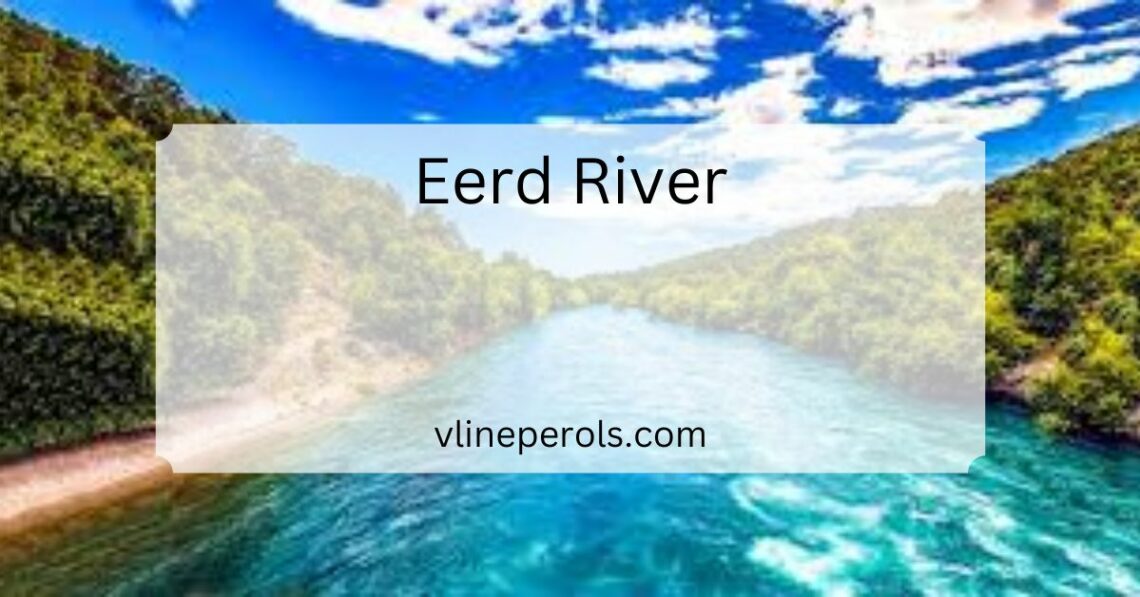
Eerd River – Protect Its Beauty, And Enjoy Fishing!
At the Eerd River, I found tranquility in its clear waters, explored lush forests teeming with wildlife, and enjoyed fishing, connecting deeply with nature’s beauty.
The Eerd River is a beautiful river that starts high in the mountains, flows through different landscapes, and helps plants and animals live. People enjoy it for fun activities like fishing and hiking.
Let’s dive into the fantastic world of the Eerd River, where nature’s wonders and exciting adventures await!
What is the Eerd River?
The Eerd River is a fascinating river that starts its journey from the lofty heights of the Eerd Mountain range. It meanders through forests, valleys, and plains, serving as a lifeline for the plants, animals, and people that rely on its waters.
This river isn’t just a source of life; it’s also a playground for recreational activities like fishing and boating, attracting nature lovers and adventurers alike. Its clear waters and picturesque surroundings make it a perfect spot for peaceful walks and moments of tranquility.
People living near the Eerd River cherish its beauty and recognize its importance in sustaining the local ecosystem. Protecting and preserving this natural treasure ensures that future generations can continue to enjoy its wonders and benefits.
When and Where Does the Eerd River Flow?
The Eerd River is a year-round river, with its flow changing with the seasons. In spring, when the snow melts in the Eerd Mountain range, the river swells with fast-moving water. Summer brings additional water from rainfall, ensuring a consistent flow even in dry times.
This river starts high up at 3,000 meters in the mountains, winding its way through valleys, forests, and open lands. It’s like a long journey bringing water to plants, animals, and nearby people.

The river’s path covers a large area, providing essential water to many communities. It’s like a lifeline, keeping everything along its banks alive and thriving. Understanding when and where the Eerd River flows helps us appreciate its importance in nature and how it supports life around it.
How Does the Eerd River Shape the Landscape?
The Eerd River is a powerful force that has shaped the surrounding landscape over thousands of years. Its flow, erosion, and deposition of sediment have created diverse landforms and features along its banks. One way the river shapes the landscape is through erosion, where it wears away rocks and soil over time. This process forms valleys, canyons, and riverbanks of various shapes and sizes.
Additionally, the river transports sediment, such as sand and gravel, downstream. When the river slows down, it deposits this sediment, creating fertile plains and deltas. These areas are essential for agriculture and support diverse plant life.
The Eerd River also plays a role in shaping habitats for wildlife. Its meandering course creates diverse habitats, including wetlands, forests, and grasslands. These habitats provide food, shelter, and breeding grounds for various animals, from fish and birds to mammals and insects.
Why is the Eerd River Important?
1. Water Source:
The Eerd River is a lifeline, providing essential water for drinking, irrigation of crops, and supporting diverse wildlife habitats along its course.Its steady flow ensures a reliable water supply for communities, agriculture, and ecosystems, especially during dry seasons.
2. Geological Diversity:
Through its erosive force, the river has shaped various landscapes, including valleys, canyons, and fertile plains. These diverse landforms contribute to the region’s geological richness and offer visitors scenic beauty and recreational opportunities.
3. Recreational Opportunities:
The picturesque surroundings of the Eerd River attract tourists and outdoor enthusiasts, offering activities such as fishing, boating, hiking, and birdwatching. These recreational activities promote local tourism and support livelihoods and businesses in the area.
4. Cultural Significance:
The Eerd River holds deep cultural significance for communities along its banks, influencing traditions, folklore, and artistic expressions.It symbolizes heritage and connection to nature, fostering a sense of identity and pride among local residents.
5. Biodiversity and Ecosystem Services:
The river’s habitats support many plant and animal species, including fish, birds, mammals, and aquatic life. These ecosystems provide valuable services such as water filtration, flood control, and nutrient cycling, contributing to environmental sustainability.
6. Environmental Sustainability:
Protecting the Eerd River and its surrounding ecosystems is crucial for maintaining biodiversity, ecological balance, and water quality. Conservation efforts, sustainable management practices, and community engagement are essential for ensuring the river’s continued health and resilience in the face of environmental challenges.
Is the Eerd River Affected by Environmental Challenges?
The Eerd River, like many natural waterways, faces several environmental challenges that can impact its health and sustainability. These challenges include:
1. Pollution:
The river may be affected by pollution from various sources, such as agricultural runoff, industrial discharges, and littering. Pollutants like chemicals, plastics, and sewage can degrade water quality and harm aquatic life.
2. Habitat Loss:
Human activities such as urban development, deforestation, and land clearing can lead to habitat loss along the riverbanks. This loss of natural habitat can reduce biodiversity and disrupt ecosystems.
3. Water Scarcity:
Changes in climate patterns, including droughts and reduced precipitation, can lead to water scarcity in the Eerd River. Lower water levels can impact aquatic habitats, water quality, and water availability for human use.
4. Climate Change:
The Eerd River is vulnerable to the effects of climate change, including rising temperatures, altered precipitation patterns, and extreme weather events. These changes can influence water flow, river ecology, and the overall resilience of the ecosystem.
5. Invasive Species:
Introducing invasive species into the river ecosystem can disrupt native species populations, alter habitats, and impact ecological balance.
Overfishing: Unsustainable fishing practices and overfishing can deplete fish populations and harm the river’s biodiversity.
6. Erosion and Sedimentation:
Natural processes like erosion and sedimentation can be exacerbated by human activities, leading to changes in the river’s morphology, sediment buildup, and altered flow patterns.
Conclusion:
The Eerd River, starting high in the mountains, flows through diverse landscapes, supporting plant and animal life. People enjoy activities like fishing and hiking. Protecting it is crucial for future enjoyment and environmental health.
You May Also Like

422 Error – Keep Your Website Smooth, Quick Fixes!
April 1, 2024
L&N Supermarket Weekly Ad – A Comprehensive Guide!
March 6, 2024

